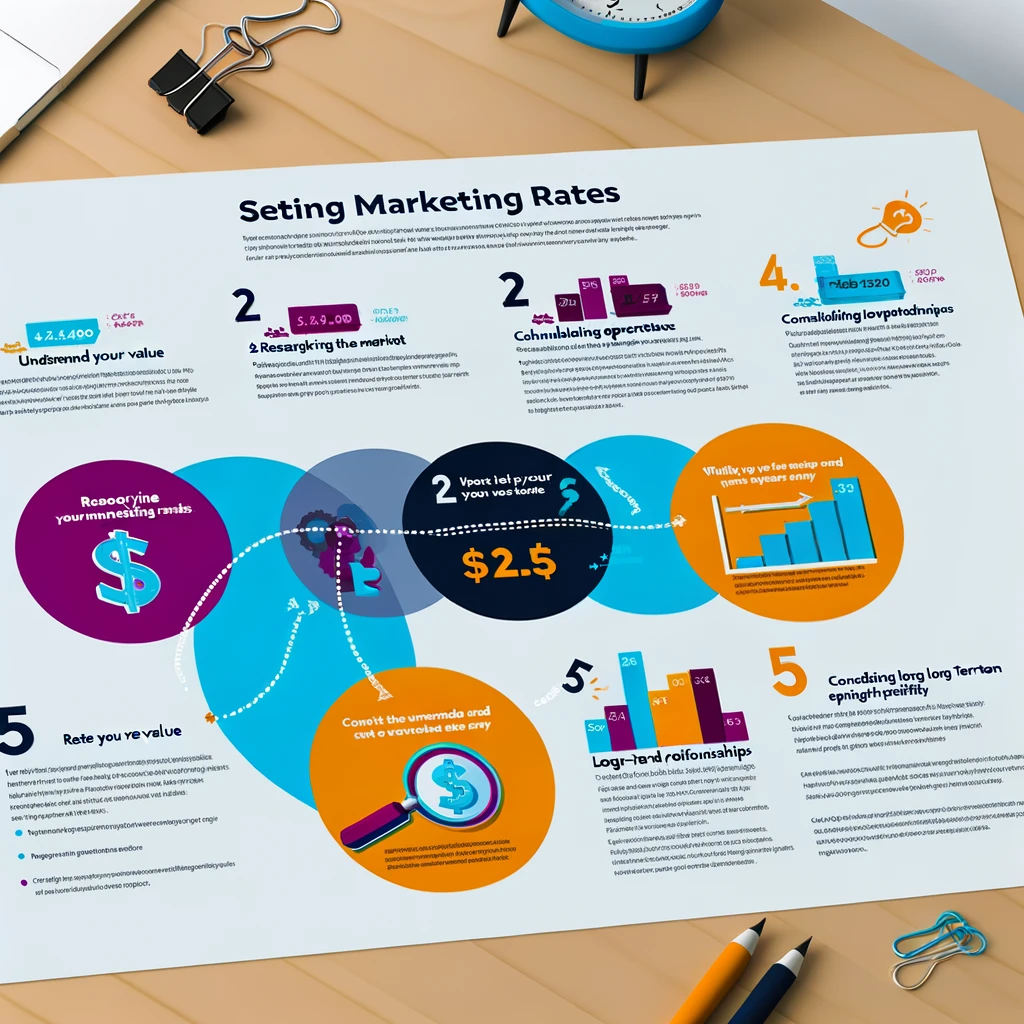-
Freelance Marketing Rates: How to Calculate Them in 5 Steps (With Expert Tips)
When it comes to the world of freelancing, setting the right rates for marketing services can seem daunting. However, understanding how to effectively calculate these rates is essential for both maintaining competitiveness and ensuring profitability. This guide breaks down the process into five manageable steps, enriched with expert tips to help you navigate through each phase with confidence. Step 1: Understand Your Value The first step in setting freelance marketing rates is to thoroughly assess your own value. This involves considering your experience, skills, and the unique solutions you bring to the table. For instance, a seasoned marketer with a decade of experience should logically command higher rates than a…
-
Calculating Statistical Range: 3 Steps With Examples
Have you ever wondered how to determine the range of a set of data? The statistical range is a simple yet important measure that helps us understand the spread or variability of data points. By calculating the range, we can quickly get an idea of how much the values in a dataset vary from each other. In this article, we will explore the three steps to calculate the statistical range and provide examples to illustrate the process. Step 1: Find the Minimum and Maximum Values The first step in calculating the statistical range is to find the minimum and maximum values in the dataset. The minimum value is the smallest…
-
Calculating Annual Growth Rate: Step-By-Step Guide
Calculating Annual Growth Rate: Step-by-Step Guide Are you looking to calculate the annual growth rate of a company or investment? Understanding how to calculate the annual growth rate is essential for analyzing financial data and making informed decisions. In this step-by-step guide, we will walk you through the process of calculating the annual growth rate, from gathering the necessary data to interpreting the results. By the end of this guide, you will have a clear understanding of how to calculate the annual growth rate and apply it to your financial analysis. Table of Contents Step 1: Gather the Initial and Final Values Step 2: Calculate the Growth Value Step 3:…
-
Calculating Average Rate Of Change: 5-Step Method
Are you struggling to calculate the average rate of change for a given function? If so, you’re not alone. Many students find this concept confusing, but it’s an important one to understand. The average rate of change is the rate at which a function changes over a given interval. It’s a fundamental concept in calculus, and it’s used in many real-world applications. Step 1: Determine the Function The first step in calculating the average rate of change is to determine the function you want to analyze. This could be any function, such as f(x) = 2x + 3 or g(x) = x^2 – 4x + 1. Once you have your…
-
Calculating Adjusted Gross Income: Examples & Tips
Calculating Adjusted Gross Income: Examples & Tips Calculating adjusted gross income (AGI) is an important step in determining your taxable income. AGI is used to determine eligibility for certain tax deductions, credits, and benefits. It is calculated by subtracting certain adjustments from your total income. In this article, we will provide examples and tips to help you calculate your AGI accurately. What is Adjusted Gross Income? Adjusted Gross Income (AGI) is a measure of your income that is used to determine your taxable income. It is calculated by subtracting certain adjustments from your total income. AGI is an important figure because it is used to determine eligibility for certain tax…
-
Calculating Return On Assets (Roa) With Examples
Calculating Return on Assets (ROA) with Examples Return on Assets (ROA) is a financial metric used to measure the profitability of a company by evaluating its efficiency in utilizing its assets. It provides insight into how effectively a company is generating profits from its investments in assets. What is Return on Assets (ROA)? Return on Assets (ROA) is a financial ratio that indicates the percentage of profit a company earns in relation to its total assets. It is calculated by dividing net income by average total assets and is expressed as a percentage. Why is ROA important? ROA is an important metric for investors, creditors, and managers as it provides…


